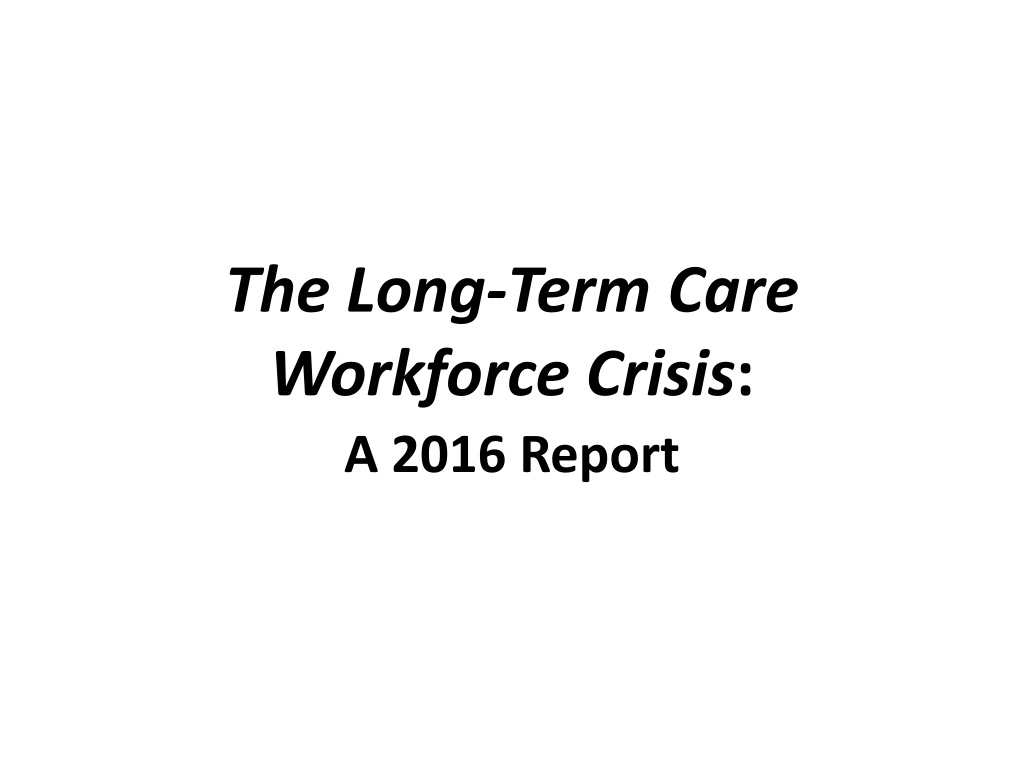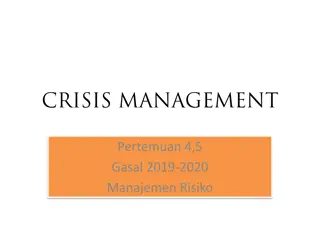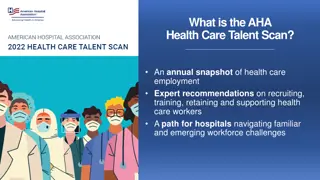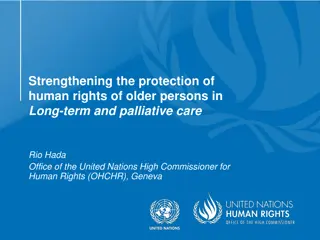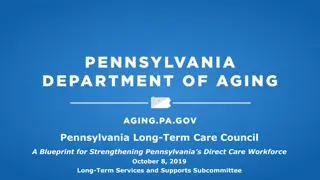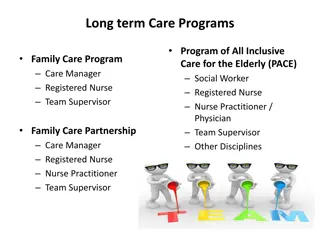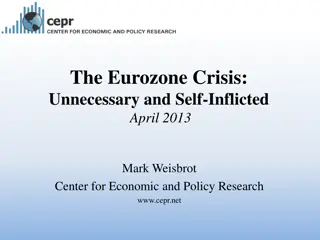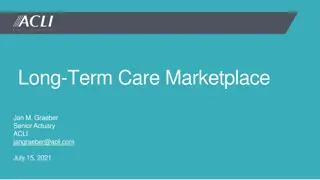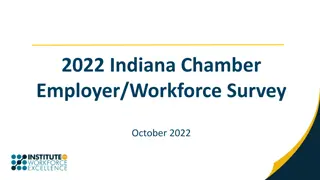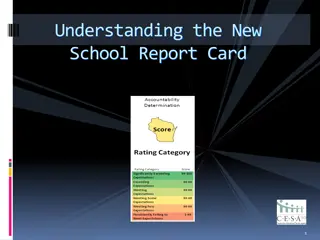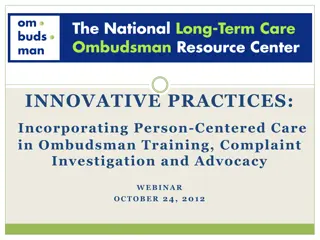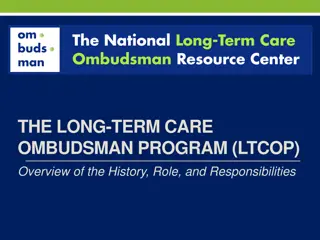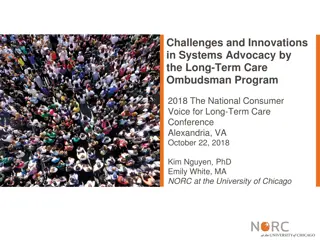Long-Term Care Workforce Crisis in Wisconsin
More than 87,000 Wisconsin residents are in long-term care facilities, with a projected increase in the elderly population. The workforce report highlights high caregiver vacancy rates, wage disparities, and challenges in recruitment and retention. The need for caregivers is growing rapidly, signaling a looming crisis in the healthcare sector.
Download Presentation

Please find below an Image/Link to download the presentation.
The content on the website is provided AS IS for your information and personal use only. It may not be sold, licensed, or shared on other websites without obtaining consent from the author.If you encounter any issues during the download, it is possible that the publisher has removed the file from their server.
You are allowed to download the files provided on this website for personal or commercial use, subject to the condition that they are used lawfully. All files are the property of their respective owners.
The content on the website is provided AS IS for your information and personal use only. It may not be sold, licensed, or shared on other websites without obtaining consent from the author.
E N D
Presentation Transcript
The Long-Term Care Workforce Crisis: A 2016 Report
The Need for Caregivers More than 87,000 Wisconsin residents live in long-term and residential care facilities That number has increased 18% since 2003 In the next 25 years, the number of Wisconsin residents age 65+ to the state s population will grow from 1 in 7 to 1 in 4
Workforce Report Documents Depth of the Crisis
Key Findings 1. High levels of caregiver vacancy rates 2. Major problems finding applicants 3. Significant wage disparity 4. Widespread use of overtime, double shifts & other strategies 5. Caregivers leaving for jobs outside healthcare 6. Lost admissions
Scope of the Problem Average caregiver vacancy rate of 14.5% 1 in 4 providers are experiencing vacancy rates of 20% and higher Estimated 11,500 vacant caregiver positions in long-term & residential care facilities In less than 10 years, the need for personal care workers is projected to increase 26.4%
Scope of the Problem 70% reported no qualified applicants for vacant caregiver positions 50% of providers had NO applicants 1 in 7 caregiver positions are unfilled
Real People Really Care Real People Really Care
Why is There a Growing Crisis? Personal caregiver starting wage is $1.25 per hour less than unskilled, non-health care, entry level workers In the past 12 months, an estimated 10,600 personal caregivers left for jobs outside of health care Between 2012 & 2015, 24% fewer people applied for certification as nursing assistants 5,431 fewer nursing assistants renewed their certification between 2012 & 2015
New Additions to the WI Nurse Aide Registry 10000 9,696 9500 9000 8,542 8500 7,957 7,849 8000 7500 7000 2012 2013 2014 2015
Why Not Pay Caregivers More? Medicaid & Family Care pay for a significant amount of the care provided in nursing homes and assisted living facilities 2/3rds of nursing home residents rely on Medicaid to pay for their care Wisconsin s Medicaid nursing home reimbursement system is the worst in the country 93% of respondents to a 2015 survey had not received an increase in Family Care rates in 5 years Pay and benefits for nursing homes & assisted living facilities are directly linked to Medicaid and Family Care reimbursement
Providers Are Trying to Cope 84% of the time, providers are relying on overtime, double shifts, temporary pool help and other strategies to fill open shifts 50% do not offer health insurance benefits for part-time staff 1 in 4 have at least 10 employees on BadgerCare Plus 18% limited admissions to their nursing homes or assisted living facilities Implemented creative solutions: in-house training programs, flexible shifts, job sharing, etc.
Summary The need for caregivers is growing dramatically Caregiver vacancy rates are reaching crisis proportions Median starting wages are not competitive with unskilled entry level non-health care jobs People simply are not applying for caregiver jobs Providers are relying on overtime, double shifts and other strategies to fill openings Inadequate Medicaid reimbursement and Family Care rates are preventing providers from paying competitive wages
What Can You Do? Support local and State initiatives to address workforce issues related to serving older adults and persons with a disability. Be a part of these conversations. Ask your State Legislators and the Governor to help address the long-term care workforce crisis in the upcoming 2017-19 State Budget. Ask them to help work with you on workforce funding, training and program issues as part of the Medicaid and Family Care programs.
